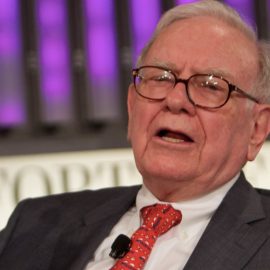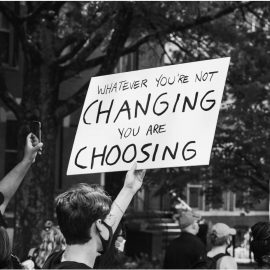

This article is an excerpt from the Shortform summary of "The Smartest Guys in the Room" by Bethany McLean and Peter Elkind. Shortform has the world's best summaries of books you should be reading.
Like this article? Sign up for a free trial here .
Who was Andy Fastow at Enron? What was his role in the Enron scandal?
Andy Fastow, Enron CFO, was responsible for many of the complicated finance deals that let Enron get away with misleading investors. Andy Fastow of Enron was responsible for many of the bad business practices that made Enron fail.
Andy Fastow Brings New Convoluted Deals
In 1998, the rise of Andy Fastow of Enron to CFO brought complicated structured-finance deals that gave Enron cash that could be kept off the books. The goal of these deals was to keep fresh debt off the books, camouflage existing debt, or book earnings or cash flow. They allowed Enron to borrow money while disguising their real debt.
In summary, Enron took out large loans and made them appear like cashflow. Enron had to pay these loans back over time, but it didn’t actually have real cashflow. So it would take out further loans to pay back earlier loans. This is the corporate equivalent of starting new credit cards to pay back old credit card debt.
The types of deals included:
Special Purpose Entities
Special Purpose Entities (SPEs) are meant to be independent legal entities that fulfill a narrow objective, like purchasing assets/securitized assets from other companies. They are structured to be separate legal entities from the main firm, to protect the firm from financial risk.
Enron abused the SPE structure to inflate earnings and hide losses. In summary, Enron used these SPEs to raise debt to purchase assets, without the debt or assets showing up on their financial statements. Enron would then sell assets to these funds and book it inappropriately as cash flow. Later, Enron would also use SPEs to hide troubled assets that were falling in value, which meant losses would be kept off Enron’s financial statements.
As long as 3% of the capital in the SPE came from an independent source and was at risk (not guaranteed), then the SPE qualified as independent. Thus Enron could fund 97% of the capital from raising debt, but not report this as debt on their balance sheets.
- In reality, the 3% of capital often came partially from friends of Enron employees, so they weren’t truly independent.
In reality, Enron gave guarantees to lenders, including guaranteeing a debt-like return while Enron kept the real return.
- Further, the debt was rarely supported by the true value of the asset, since it was based on unreasonably optimistic assumptions about the success of the asset.
Further, sales of the assets could be booked as operating income. So it looked like Enron had sold something and booked cash flow. But there was a big wad of additional debt that had to be paid back.
- Further, this operating income only appeared once – Enron couldn’t claim that cash flow in future years. So Enron promised public markets growth of real underlying earnings, but was actually filling it desperately with one-time sale deals.
Andy Fastow’s Enron deals were a part of the scheme that eventually brought down the company.
Minority Interest Transactions
Another one of Andy Fastow’s Enron schemes was minority interest transactions. A majority-owned Enron subsidiary (Entity A) purchased poorly performing Enron assets. A new allegedly independent Entity B took out a bank loan to purchase a minority interest in Entity A. Entity A then loaned Enron these funds from the sale to Entity B.
With this structure, it appeared that Enron received funds from an affiliate, as opposed to from the bank that loaned Entity B. Thus Enron didn’t book debt for the transaction, and Enron booked funds as operating income!
Ostensibly, the value and earnings of the assets would pay back the debt. However, if the assets were insufficient to pay back, Enron would issue stock or pay cash to Entity B. These guarantees made the arrangement much more like a loan than a true equity purchase.
Example: Project Nahanni: Enron borrowed $485MM in debt and $15MM in equity to buy Treasury bonds, sold the Treasury bonds, and booked this as cash flow. Andy Fastow, Enron CEO, facilitated these deals.
Prepay
Andy Fastow and Enron would agree to deliver natural gas/oil to an independent offshore entity. The entity would pay Enron upfront for these future deliveries, with money it obtained from a lender. The lender would then agree to deliver this commodity to Enron; Enron would pay a fixed price for these deliveries over time.
In reality, this was little more than a loan:
- Take the commodity out (it just circles from Enron to entity lender to Enron), and you have a pure loan with interest.
- The entity was set up by the lender.
- These prepays weren’t accounted for as debt, but rather trading liabilities offset by trading assets.
Enron was perennially short on cash, so instead of using operating cash flow to pay them back, it used fresh prepays to replace earlier ones. This is another example of Enron’s pattern of using increasingly complicated vehicles to cover for previous shortfalls.
This Was All Done in the Open
Contrary to popular belief, many of these deals were not secret, but rather publicly revealed and boasted about.
Third parties internal (Arthur Andersen) and external (analysts) applauded the deals for their financial ingenuity. Banks participating in the deals earned large fees.
Fastow, who saw himself as a savior of the company, inappropriately participated in these deals himself, providing the 3% independent capital for the SPE. In Fastow’s view, these were “just commissions,” and Enron owed him for saving the day.
Enron’s Chief Accounting Officer Rick Causey was meant to keep Fastow in check, but he saw his job as facilitating Fastow’s transactions.
By the end, Enron owed $38 billion, of which only $13 billion was on its balance sheet.
Andy Fastow, Enron CFO, was responsible for the financial decisions of the company. Andy Fastow of Enron allowed and encouraged poor financial decisions.

———End of Preview———
Like what you just read? Read the rest of the world's best summary of Bethany McLean and Peter Elkind's "The Smartest Guys in the Room" at Shortform .
Here's what you'll find in our full The Smartest Guys in the Room summary :
- How Enron rose to become one of the world's most promising companies
- How Enron management's greed led it to start cutting corners
- The critical failures that crashed Enron's house of cards to the ground






